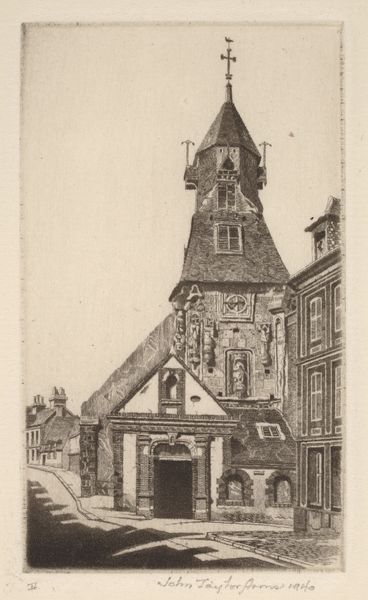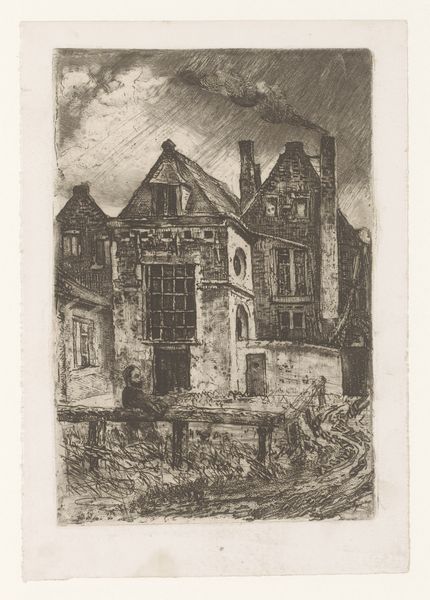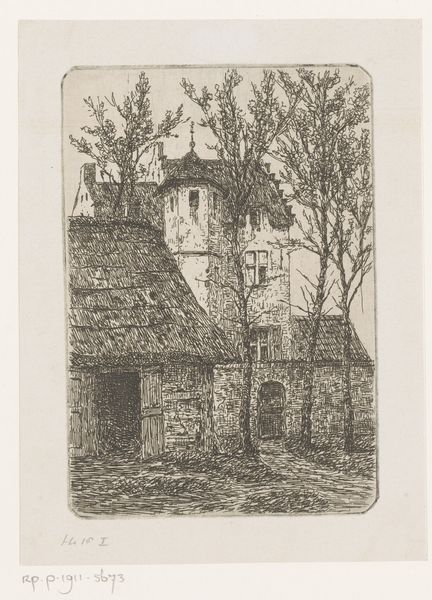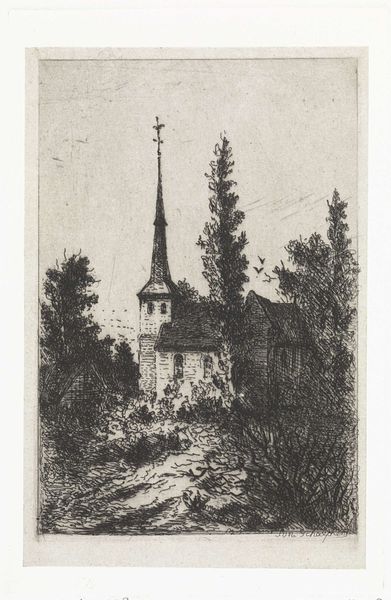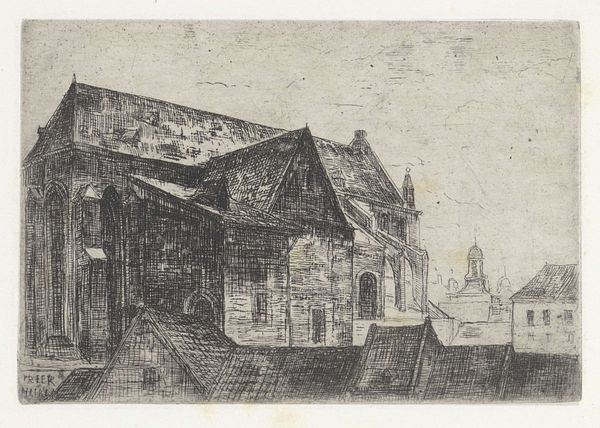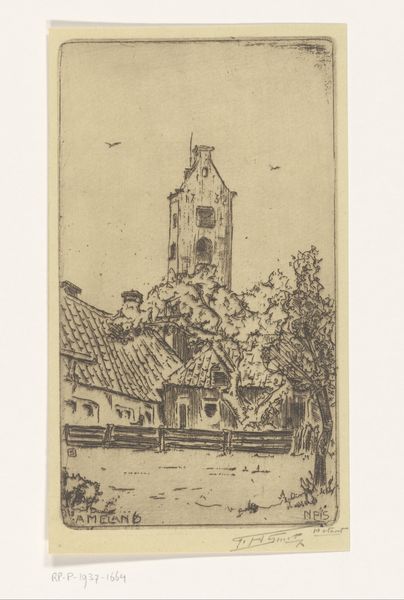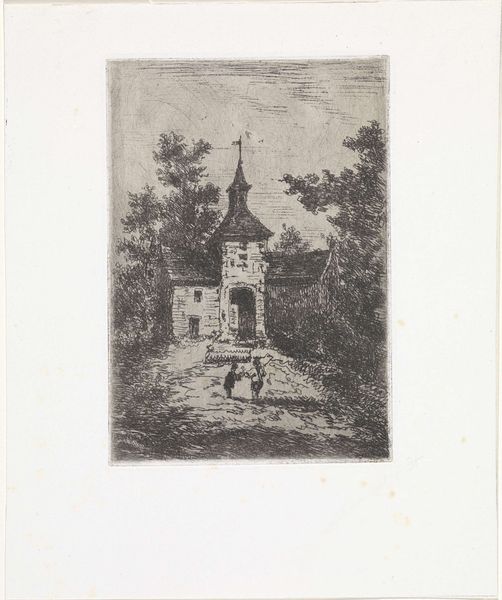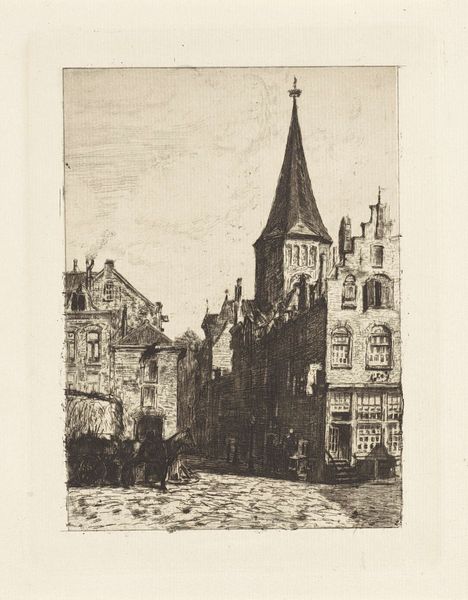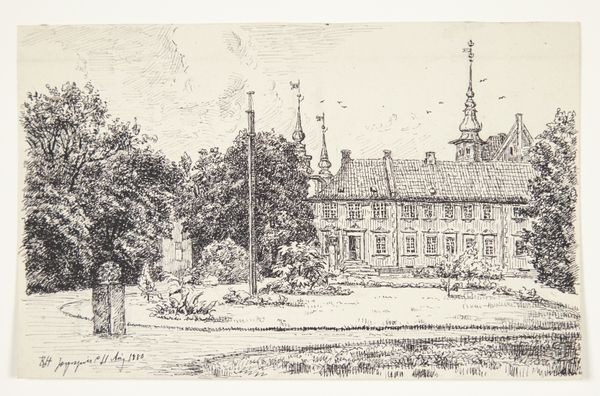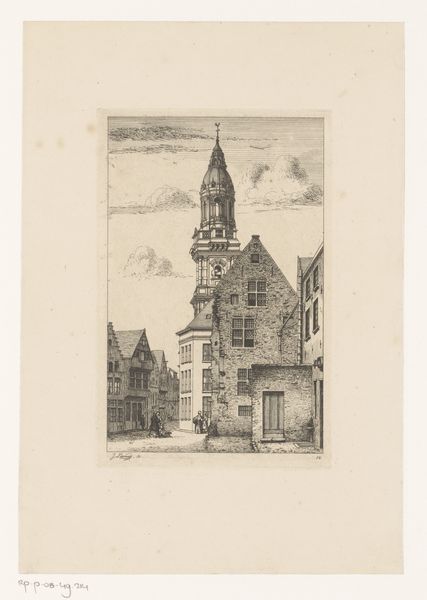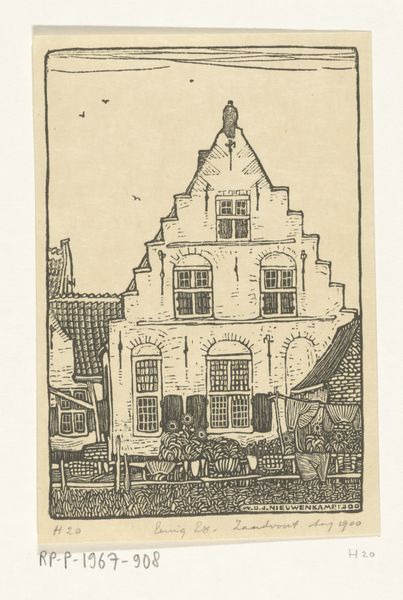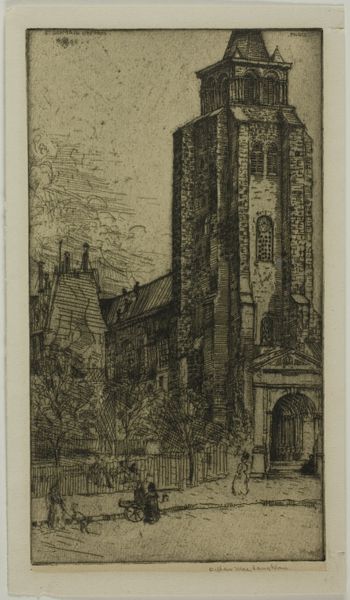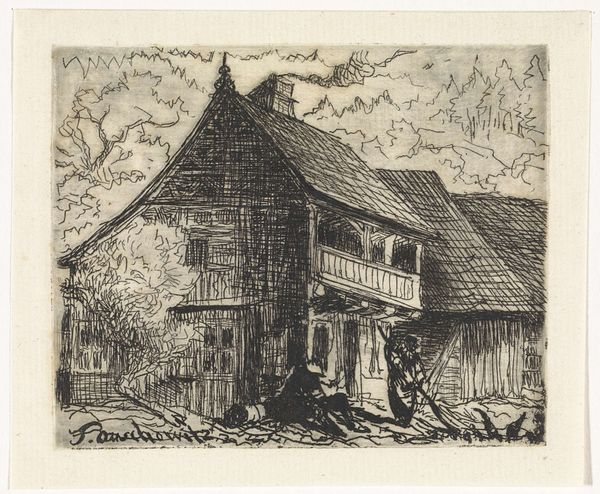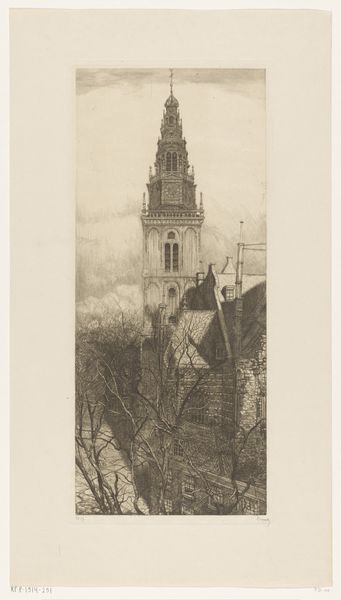
print, engraving
#
medieval
# print
#
landscape
#
history-painting
#
engraving
Dimensions: height 105 mm, width 72 mm
Copyright: Rijks Museum: Open Domain
Curator: Let's turn our attention to "Toegangspoort naar een kasteel," or "Gateway to a Castle," an engraving crafted between 1830 and 1899. It is held here at the Rijksmuseum. Editor: There's a melancholy beauty to it, I think. The composition is interesting with the gate off-center and a lone figure crossing the bridge. And yet, the scene still conveys an austere beauty. Curator: The artist, Alexander Schaepkens, employs a fine level of detail given that this is printmaking. We see great attention devoted to the brickwork of the structure, but also the etching marks that create atmospheric perspective. It is likely influenced by the Romantic movement’s fascination with medieval themes. Consider, too, how easily prints could circulate. Editor: True, printmaking allowed a broader distribution and therefore also influenced what themes were considered popular or noteworthy in culture. It gives the average person more connection to powerful social structures. What about the semiotic implications here? The archway functions almost like a proscenium framing the entry into the unknown—a symbol of transition. Curator: Precisely. But transition, to what, and for whom? Let’s also consider what "history-painting" signified then, as a reflection of both artistic skill and patronage; who commissioned it? Was it to romanticize the feudal system and monarchy? Editor: From a purely visual standpoint, Schaepkens created wonderful depth, playing with light and shadow so our eyes wander into and then over the tower to observe a delicate play of light across the textured façade and how its structure plays with the landscape itself. Curator: Indeed. I think our understanding deepens when we probe who this imagery was intended for, what social structures made such prints desirable objects, and how it may speak to the politics of its day. Editor: I'm struck once again by the power of its architectural lines and its emotive force, which transcends any immediate historical meaning.
Comments
No comments
Be the first to comment and join the conversation on the ultimate creative platform.
